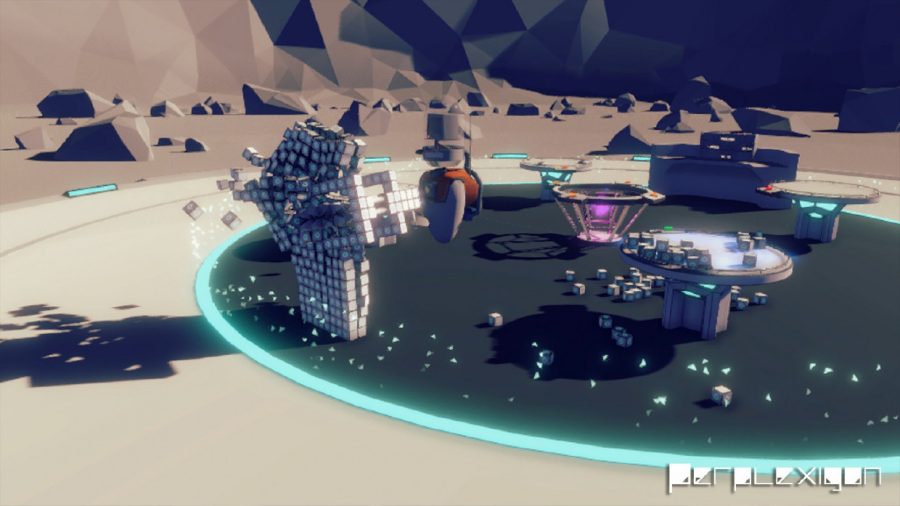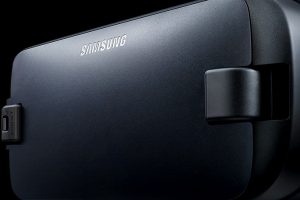This review was originally created in December 2018 for HTC, targeted to their Vive/Vive Pro (VIVEPORT). It is reproduced here without alteration.
Perplexigon is defined by Urban Dictionary as something that becomes complex as a result of over-thinking, obsessing, and evaluating. In other words, something that is overly complicated. Perplexigon the game lets you use blocks to design just about anything you can think of, from the simplest contraptions to the most complex – and complicated – creations. And unlike most virtual reality experiences, you can do it all with multiple players.
There are three types of blocks to choose from: Structural, Mechanical, and Action. Structural blocks include cubes, wheels, pyramids, rhombicuboctahedrons (Archimedean solid with eight triangular and eighteen square faces), plates, poles, and spheres. Mechanical blocks include hinges (elbow joints letting connected blocks swing about a central axis), linear compression springs letting you create shock absorbers or bouncy bits, axles (allows two sides to spin freely), and ball joints (connects two blocks with a full range of rotation between them). Action blocks include clockwise and counterclockwise remote activated motors, thrusters (applies a continuous force to whatever it’s attached to and blows away anything in its wake), and bombs (trigger an explosion remotely or link several together to really shake things up).
Additional in-game elements include guns and wires. The three types of guns are Save Gun, which can be used to save or load objects you’ve made, Teleport Gun, which can move you around the environment, and Delete Gun, which can remove individual blocks and break any wire links for that block. The wires are just like they sound, links or connections between blocks. You’ll know a wired connection between blocks has been made when you see sparks.
This wide range of blocks and actions can be enjoyed either seated or standing in any size room-scale environment. Both Vive controllers manipulate the blocks and other in-game elements within the single space-based environment. The controller’s Trigger picks up or creates blocks while in the Block menu, the Grip picks up guns or points your finger, the Menu button toggles between the Action and Block menus, and the Touch Pad selects blocks in the Block menu or activates blocks in the Action menu. Despite a very high initial learning curve with all of its available options, the control setup is intuitive enough and can soon become second nature with enough practice.

Although more environments and actual puzzled-based missions are planned for the future, right now, Perplexigon features just a single sand box environment to play in. You can use the various blocks to build whatever you’d like, then toggle gravity, trigger action blocks, or create sequenced items. For the online multiplayer mode, each of your friends (or strangers) will of course need their own copies of the game, and then you can all build things collaboratively. This is a refreshing change from the usual single-player virtual reality experience, although it will still be a challenge finding other people to play against.
While it would be nice to judge a game on its future potential, it’s only fair to evaluate what’s currently in-place. What Perplexigon delivers right now is a virtual set of building blocks, the ability to create contraptions, and the option to blow it all up. If that sounds appealing, then you’ll find a lot to like about this game. If you’re looking for something more, however, it may be best to wait to see if the additional features get added.
Score: 3 out of 5 stars.
Perplexigon is available on Viveport or with a Viveport Subscription.






 Your total news and information resource for all things Science, Technology, Engineering / Mathematics, Art, and Medicine / Health.
Your total news and information resource for all things Science, Technology, Engineering / Mathematics, Art, and Medicine / Health.
Leave a Comment